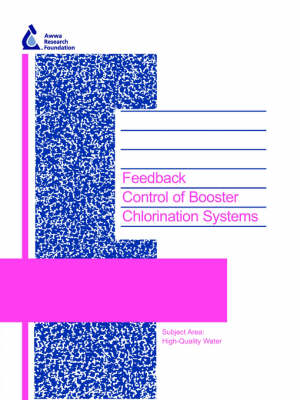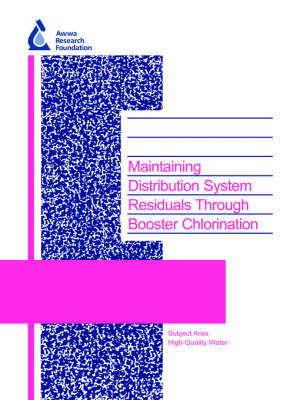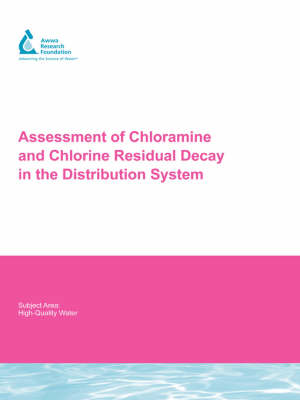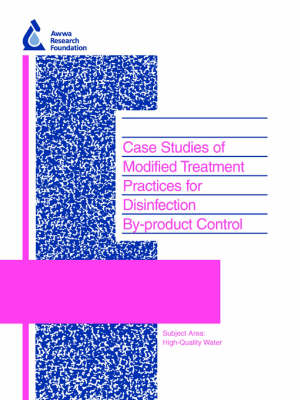Water Research Foundation Report
4 total works
Feedback Control Booster Chlorination Systems
by James G. Uber, F. Shang, M. Polycarpou, and Z. Wang
Published 1 January 2004
The report presents a foundation of feedback control algorithms and associated modeling tools. This foundation is necessary for the future development of utility-specific control schemes. The ultimate vision adopted in the report is one of a multiple-input, multiple-output (MIMO) feedback control system, where booster chlorination stations are distributed at key points in the system and are fed information from distributed chlorine sensors located in critical areas. The report also presents the elements of a comprehensive design method for distributed chlorine controller design.Originally published by AwwaRF for its subscribers in 2003 This publication can be purchased and downloaded via Pay Per View on Water Intelligence Online - click on the Pay Per View icon below
Maintaining Distribution System Residuals Through Booster Chlorination
by James G. Uber
Published 1 January 2004
The goal of this project was to discuss the potential advantages associated with booster disinfection, the kinetics of chlorine decay and trihalomethane (THM) formation under rechlorination conditions, and the use of network hydraulic and water quality models to locate booster disinfection stations and determine their dose characteristics. The following are highlights from the research: A laboratory procedure was proposed for analyzing chlorine decay under simulated booster conditions. An initial set of experiments evaluated disinfectant decay under booster conditions, and found it to be dependent on both the magnitude and time of the boost dose. THM formation under booster conditions showed no long-term reduction for any set of results, indicating THM formation is not solely dependent on disinfectant concentration. In booster chloramination, boosting with chlorine appeared to be very successful at producing and maintaining a low ammonia concentration by recombining with the ammonia formed from chloramine decay. A second-order model, including a reaction component that represents natural organic matter, was developed to describe chlorine decay and THM formation under booster conditions. A method was developed to determine good locations and schedules for multiple booster doses by a systematic evaluation of alternative designs using network models. By exploring the disinfection decay kinetics under rechlorination, and developing methods for booster chlorination systems design, the project results will assist utilities and consultants in making better use of booster disinfection as a residual maintenance approach. Originally published by AwwaRF for its subscribers in 2003
Assessment of Chloramine and Chlorine Residual Decay in the Distribution System
by Zaid K. Chowdhury, R. Scott Summers, Lori Work, Natalie Smith, Lewis Rossman, and James G. Uber
Published 1 March 2007
Maintaining chlorine and chloramine residual is a key factor that determines potability of distributed water. Decay of these disinfectants is affected by various water quality and infrastructure related factors. Understanding the decay of residuals in the distribution system is critical with respect to safe delivery of drinking water and in developing water quality models that can be used by utilities for the operation of potable water delivery systems. In order to comply with microbial and disinfection byproduct (M/DBP) regulations, water suppliers are continually investing in treatment processes for achieving greater levels of inactivation and DBP precursor removal. As a result of these changes in water quality, maintaining a disinfectant residual in the distribution system can be challenging Bench-scale testing has been used to determine the effect of advanced treatment (enhanced coagulation, granular activated carbon adsorption, ozonation, biofiltration, and ultraviolet irradiation) on chlorine and chloramine decay.
Additional studies examine the effects of disinfectant dose, temperature, pH, blending, and rechlorination. The effects of water quality on pipe-wall demand were evaluated using the distribution system simulator at the U.S. Environmental Protection Agency's Test and Evaluation Center. Several models are developed regarding disinfectant decay, making it easier to predict chlorine demand after changes in treatment. The multi-species water quality analysis and network path analysis extensions to EPANET will make the modeling package more robust and will allow utilities to predict chlorine residual at any point in their distribution system with greater confidence.
Additional studies examine the effects of disinfectant dose, temperature, pH, blending, and rechlorination. The effects of water quality on pipe-wall demand were evaluated using the distribution system simulator at the U.S. Environmental Protection Agency's Test and Evaluation Center. Several models are developed regarding disinfectant decay, making it easier to predict chlorine demand after changes in treatment. The multi-species water quality analysis and network path analysis extensions to EPANET will make the modeling package more robust and will allow utilities to predict chlorine residual at any point in their distribution system with greater confidence.
Case Studies of Modified Treatment Practices for Disinfection By-product Control
by Stuart W. Krasner, S. Rajachandran, J. Cromwell, D. Owen, and Zaid K. Chowdhury
Published 1 January 2004
Utilities must decide whether to modify their existing treatment practices to achieve compliance with the D/DBP regulations. A regulatory impact analysis predicted that up to 70% of large surface-water systems would need to make some treatment modifications. Meeting multiple water-quality objectives plays an important role in the decision-making process of water utilities. Utilities must meet other regulatory requirements and secondary drinking-water standards. In addition, there are operational, financial, and engineering issues that affect the selection of treatment technologies. Because of the uncertainty of how stringent certain regulations will be and the high costs of advanced treatment technologies, many utilities have implemented treatment modifications in stages. Most utilities have made treatment modifications that have been cost-effective to meet their site-specific needs and objectives, while continuing to study or implement long-term treatment changes to meet more stringent future regulations. Utilities must factor in other regulatory requirements and secondary drinking-water standards when selecting a treatment modification for compliance with the D/DBP Rule. Some utilities chose advanced treatment processes (e.g., ozonation, membranes) that would enable them to satisfy other current and anticipated future regulations or other water quality objectives. Some systems chose ozone, in part because of its ability to destroy taste-and-odor-causing contaminants. Likewise, granular activated carbon was added to filters for taste-and-odor control. In addition, space and retrofit considerations affected technology choices. Many utilities have implemented treatment modifications in stages. To meet Stage 1 of the D/DBP Rule, most utilities have made treatment modifications that have been cost-effective to meet their site-specific needs and objectives, while continuing to study or implement long-term treatment changes to meet more stringent future regulations. The major disadvantage to staged implementation was that the treatment process was re-optimized each time treatment modifications were made. However, this problem was minimized if the full range of changes in treatment was envisioned in advance and if incremental modifications were made that were part of and consistent with long-term modifications. Originally published by AwwaRF for its subscribers in 2003 This publication can be purchased and downloaded via Pay Per View on Water Intelligence Online - click on the Pay Per View icon below



